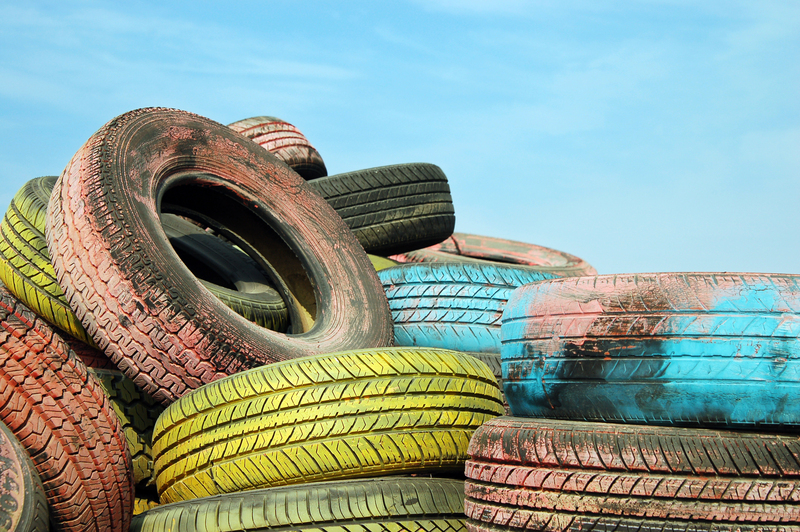Sustainable Ways to Get Rid of Your Old Pots and Pans
Are your kitchen cabinets overflowing with old cookware--pans with warped bottoms, scratched nonstick pots, or mismatched lids? As you invest in new culinary gear, the logical next question is: What should you do with the old pots and pans? Tossing them in the trash might be convenient, but it's far from eco-friendly. Pots and pans are often made from materials that can persist in landfills for decades or longer, needlessly contributing to waste and pollution.
If you're looking for sustainable ways to get rid of your old cookware, you're in the right place. This comprehensive guide will explore a variety of environmentally responsible solutions for parting with your old kitchen wares. Whether they're made of stainless steel, aluminum, cast iron, copper, or nonstick materials, there's an eco-conscious disposal option out there for your unwanted pots and pans.

Why Sustainability Matters When Disposing of Cookware
Before diving into the plethora of sustainable solutions, let's consider why it's important to find sustainable disposal methods for pots and pans:
- Landfill impact: Cookware items are mostly non-biodegradable and can take generations to decompose.
- Resource conservation: Many pots and pans are made from metals and other materials that can be recycled into new products, saving energy and raw resources.
- Environmental health: Scratched nonstick surfaces can release chemicals into soil and water if improperly discarded.
- Social good: Donating or repurposing cookware supports people and organizations that might otherwise lack access to quality kitchen equipment.
Best Practices for Sustainable Cookware Disposal
Before you dispose of your old pots and pans, always check for local regulations regarding metal recycling and hazardous waste. What's accepted varies depending on your municipality, so a quick visit to your city's waste management website can save frustration and potential fines.
Below are the most effective eco-friendly cookware disposal options, arranged from highest to lowest sustainability:
1. Donate Usable Cookware
If your pans and pots are still functional (no deep scratches, excessive rust, or wobbly handles), donation is the best first step. Donation not only diverts items from the landfill but also provides affordable essentials to those in need.
- Charity thrift stores: Goodwill, Salvation Army, or local rescue missions often accept gently used cookware.
- Homeless shelters and soup kitchens: Many such organizations--especially those running meal programs or transitional housing--welcome kitchenware donations.
- Community centers & food pantries: Some community programs accept used cookware to distribute to low-income families.
- Online gifting platforms: Websites like Freecycle, Buy Nothing, and local Facebook groups let you offer items for free.
2. Reuse or Repurpose Old Pots and Pans
Even cookware that's no longer suitable for cooking may serve other purposes around the house or garden. Repurposing is a creative and zero-waste option!
- Planters: Fill deep saucepans or Dutch ovens with soil and use as quirky planters for herbs or succulents.
- Organizers: Use roasting pans or large frying pans to organize craft materials, gardening tools, or garage odds and ends.
- Kitchen storage: Clean old pots make excellent holders for utensils, fruits, or bread.
- Decorative items: Flip pans upside down and use as rustic light fixtures, clocks, or wall art.
- Bird feeders: Suspend shallow pans from trees to create eco-friendly bird baths or feeders.
3. Recycle Metal Cookware Responsibly
Most metal cookware--including those made from stainless steel, aluminum, wrought iron, or copper--can be recycled. However, you can't just toss them in the curbside recycling bin unless your local authority accepts scrap metal.
How to recycle old pots and pans:
- Contact your recycling center: Many municipal centers will accept cookware if dropped off at a dedicated scrap metal collection point.
- Scrap yards: Local metal recyclers often accept any kind of metal cookware. Some may even pay for certain metals like copper or aluminum.
- Remove handles or non-metal parts: To streamline the recycling process, remove plastic or wooden handles when possible.
- Clean thoroughly: Rinse away any food residue before delivering for recycling.
4. Upcycle for DIY Projects
If you're feeling extra creative, old cookware can become the foundation for upcycled home projects. Here are some inspiring upcycling ideas:
- Chalkboard pans: Paint the bottom of a frying pan with chalkboard paint and use as a fun kitchen message board.
- Garden art: Stack pots and pans to make whimsical sculptures for your garden or patio.
- Wind chimes: Assemble smaller pots and lids into a functional wind chime.
- Children's toys: Old pots are classic musical instruments for toddlers and young children.
Challenges with Nonstick Cookware Disposal
Disposing of old Teflon and nonstick pans requires extra attention due to the chemicals used in their coatings. Most municipal recycling facilities can't process nonstick cookware unless the coating is completely removed--which is difficult for consumers to do at home.
Here are sustainable alternatives for nonstick cookware:
- Manufacturer recycling programs: Some brands (such as Calphalon and TerraCycle) offer take-back programs for their products.
- Scrap metal dealers: Ask if they'll accept nonstick pans, as some have machinery to remove coatings.
- Creative reuse: Use old nonstick pans for crafts or non-food uses if recycling isn't possible.
Upgrading? Shop for Eco-Friendly Cookware
If you're getting rid of old cookware, consider upgrading to sustainable products for next time! Here's how to make an eco-conscious cookware selection:
- Opt for recyclable materials: Stainless steel, cast iron, and copper are all highly recyclable.
- Avoid harmful coatings: Choose ceramic or natural finishes over Teflon or other chemical-laden coatings.
- Invest in quality: Well-made cookware lasts longer, resulting in less frequent replacement--and less waste over time.
- Look for warranties: Many premium brands offer lifetime guarantees, minimizing the likelihood of future disposal issues.
Sustainable Disposal Dos and Don'ts
- Do assess if your cookware is reusable or repairable before attempting to recycle or dispose of it.
- Do clean items thoroughly before donating or recycling.
- Do check with local recycling centers to see if they accept cookware, especially those with coatings or non-metal parts.
- Don't toss cookware with chemical coatings, like Teflon, in household recycling bins.
- Don't send usable items straight to landfill if they could serve someone in need.
- Do separate metal from plastic pieces, as these may need to be recycled differently.
- Don't neglect easy creative ideas--sometimes the most sustainable solution is to repurpose an item at home!

Frequently Asked Questions (FAQ) about Disposing of Old Pots and Pans
Can old cookware go in the recycling bin?
Not usually. Curbside recycling programs rarely accept metal cookware--especially if it has nonstick or plastic parts. However, many recycling centers or scrap yards will take it if you drop it off. Always check with your local waste authority.
Can I donate scratched nonstick pans?
*Most organizations will not accept cookware with badly damaged coatings* because of health concerns. Gently used nonstick pans, however, may still be accepted by some groups--call ahead to confirm.
Do cookware brands offer recycling take-back programs?
Yes! Some cookware companies run take-back or recycling programs for used products. Brands like Calphalon and TerraCycle have led the way, inviting consumers to return their old pans for recycling--even covering shipping in some cases.
How should I dispose of a rusty cast iron pan?
*If the pan is still structurally sound, consider cleaning and reseasoning it--it could be almost as good as new! Severely damaged cast iron can be recycled with scrap metal at a local center or sold to metal recyclers.*
Conclusion: Make a Positive Impact by Choosing Eco-Friendly Pot and Pan Disposal
Getting rid of old pots and pans doesn't have to mean adding to landfill waste or ignoring environmental consequences. From charitable donation and creative repurposing to responsible recycling, there are plenty of sustainable solutions for disposing of cookware. Each path takes a little extra effort, but the outcome is worth it: less waste, conserved resources, and a greener planet.
The next time you're clearing out your kitchen, use one (or several!) of the options above to dispose of your old cookware sustainably. Your choices don't just benefit the environment--they contribute to your local community and inspire creativity, too.
For even more impact, consider investing in long-lasting, eco-friendly cookware for a greener kitchen. With each sustainable decision, your home (and the planet) will thank you.